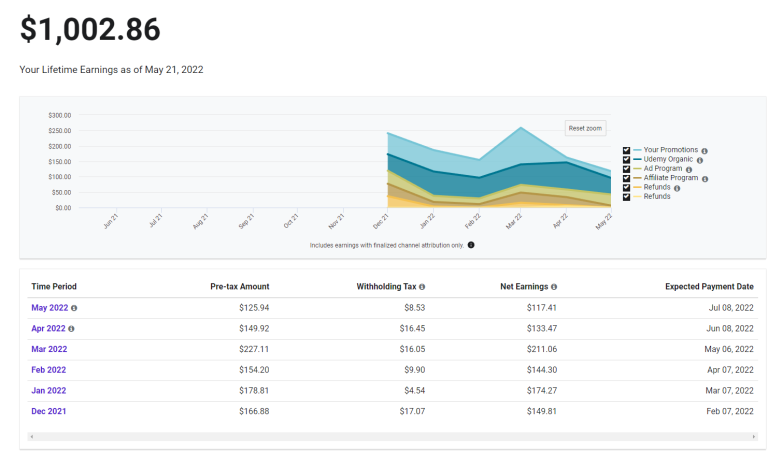Membership Site vs Online Course: Which is Better?

Are you considering launching a digital learning platform but unsure whether to create a membership site or an online course? Both options serve educational purposes but cater to different needs and models.
A membership site offers ongoing access to content and resources through a subscription model.
This option is ideal for those who want to build a community and provide continuous learning or updates. It’s great for fostering long-term engagement and recurring revenue.
An online course, on the other hand, is typically a one-time purchase that provides structured learning paths on specific topics.
This format is perfect for delivering a comprehensive, focused educational experience that users can complete at their own pace, usually culminating in a certificate or a completion credential.
What Is a Membership Site?
A membership site is a special part of a website where you need to pay to get in and see the content. People pay regularly, like every month, to keep their access. This setup works well for websites that keep adding new things for members to learn and use.
On a membership site, users often can talk to each other and share ideas in a private area. This helps everyone feel part of a group and can make the experience better because people can help each other out.
Sites like these are great for topics that keep changing, like computer skills or new business strategies. They keep members interested by constantly adding new and relevant content, which also helps the site earn money regularly.
What Is an Online Course?
An online course is a way to learn a particular topic through the internet. You pay once to get into the course, and then you can go through the lessons at your own speed. The course is set up to take you from knowing a little to knowing a lot, using videos, texts, and sometimes quizzes to check what you’ve learned.
Courses are usually designed to follow a clear path, starting with simple ideas and moving to more complex ones. This makes sure that as you go through the course, you build on what you’ve learned earlier.
At the end of most online courses, there’s a big test or a project that lets you show that you’ve understood everything. When you finish, you often get a certificate that you can show to employers or anyone else to prove you’ve learned something new and useful.
Who Benefits Most from Membership Sites?
Membership sites work best for people who want to keep learning over time, especially about subjects that keep changing, like technology, marketing, or creative skills. These sites are ideal because they update their content regularly, providing fresh lessons and resources.
- Continuous Learners: People who enjoy constantly updating their skills and knowledge.
- Community Seekers: Those who value interacting with others who share similar interests or professional goals.
- Professionals: Experts in fields that evolve quickly and require them to stay current with trends and practices.
For example, web developers might join a membership site to stay on top of new coding languages and tech tools that come out. They can find tutorials, code examples, and discussions with other developers to help them master new skills and solve problems.
Who Should Opt for Online Courses?
Online courses are perfect for learners who need a clear, structured way to gain a new skill or knowledge area, especially if they want to learn something deeply over a short period. This format suits those who prefer to study at their own pace or need a certification for career advancement.
- Busy Professionals: Individuals who need to learn a new skill quickly and can study on their own schedule.
- Students: People preparing for academic or career qualifications who need thorough understanding in specific areas.
- Hobbyists: Anyone looking to start a new hobby or learn more about a personal interest in a structured way.
Take, for instance, someone who wants to start a career in graphic design but has no background in it.
An online course can take them through the basics to more advanced concepts, ending with a portfolio project that helps them demonstrate their new skills. This structure helps ensure they cover all necessary aspects of design systematically.
Differences in Content Structure and Delivery
Membership Sites
Membership sites offer access to a broad collection of content that keeps growing. Here’s how it works:
- You get entry to a large library of materials.
- Items are sorted into different topics or categories.
- New materials like videos, articles, or downloadable content are added often to keep things fresh.
Online Courses
Online courses have a more fixed layout:
- The course follows a set syllabus divided into lessons or modules.
- Each part builds on the last, often including various resources like videos, readings, and quizzes.
- Most materials are pre-made and can be worked through at your own speed, but some may be led by an instructor.
Pricing and Revenue Models
Membership Sites
Membership sites usually work on a subscription basis:
- You pay regularly, like every month or year.
- Sometimes, there are different levels of membership, giving more content or perks with higher levels.
- They might also make money by offering extras like special content or events.
Online Courses
Online courses are typically a one-time buy:
- You pay once or in a few installments to access the course.
- There might be extra offers for more courses or materials.
- Platforms hosting these courses might take a share of the revenue or charge fees for transactions.
Student Experience and Engagement
Membership Sites
Membership sites focus on a continuous learning journey:
- You can access all the content anytime and go back to it whenever you like.
- These sites might have interactive parts like forums or live sessions, helping you stay engaged and up-to-date.
Online Courses
Online courses offer a more traditional learning path:
- There’s a clear start and end, and you work through the content on your own schedule.
- While you might have assignments or quizzes, interaction with instructors is usually limited.
- The main goal is to finish the course and meet the learning targets.
Community and Networking Opportunities
Membership Sites
These sites are great for making connections:
- They often have spaces like forums or social networks where you can talk and work with others.
- Being part of a group with shared interests can help you feel like you belong and keep you coming back.
Online Courses
Networking isn’t usually the focus here:
- Some online courses offer forums or groups for discussion, but these are less common.
- The main emphasis is on learning the material, not on making connections.
Final Verdict: Which is Better
If you’re looking for a dynamic learning environment that adapts to evolving topics and allows for continuous growth, a membership site might be the better choice for you. These platforms are ideal if you value community interaction and ongoing access to a diverse range of resources.
Membership sites encourage regular engagement and provide a space for like-minded individuals to connect and collaborate, making them excellent for those who prefer a more communal and flexible learning experience.
On the other hand, if your goal is to acquire specific skills or complete a defined educational program within a set timeframe, an online course would likely serve you best.






